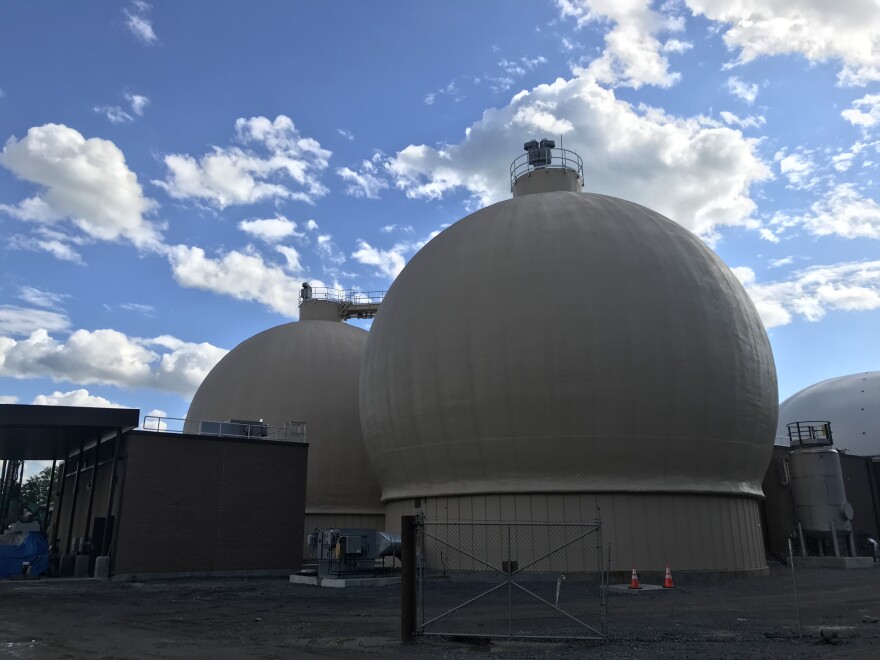New York state will soon require large generators of food waste donate what they can to those in need and compost the rest. The mandate won't go into effect until 2022, but work is already underway in the Mohawk Valley to meet this new recycling challenge.
Bill Rabbia, executive director of the Oneida-Herkimer Solid Waste Authority (OHSWA), says they do their best to make one last use of the trash that ends up in landfills by capturing the methane gas it emits to generate electricity. However, Rabbia says the system is imperfect.
"As efficiently as you try to do that, there's still some fugitive emissions," Rabbia said. "There's not a roof over your landfill."

Enter anaerobic digestion. These large, round machines in Utica have been used for years to capture methane gas in Oneida County's sewage treatment plant. Now, they are processing food slurry - organic food waste mixed with water. And thanks to a new $3.4 million dollar depackaging machine, the amount of material the waste authority will be able to take in is exponentially larger.
"It can depackage glass, even liquid beverages like beers, sour creams, a box of cereal, or popcorn," Rabbia said. "That's what this equipment was designed to do - separate that packaging from the organics so you can process the organics and not have to send it to the landfill."
And to encourage more customers to bring their food scraps to the facility, the OHSWA is charging about $22 less per ton of waste than what it costs large producers like grocery stores, colleges, and food generators to send that material to the dump. Rabbia says it may initially cost more for some generators to transition to the new system, training employees how and where to separate food scraps and then arranging for it to be sent to the waste authority. But that's not a deterrent for some.
Brian Hansen, director of environmental protection, safety and sustainability at Hamilton College, says he is excited to join in on this effort. The change in the college's composting system may be more expensive at first, but it's worth it as they will now be able to recycle food waste from seven dining locations on campus instead of the two currently.
"We can now maximize our collection efforts," Hansen said. "So on multiple accounts and in multiple different ways, going to the solid waste authority just makes the process and more efficient and ultimately our plan is more cost effective."








